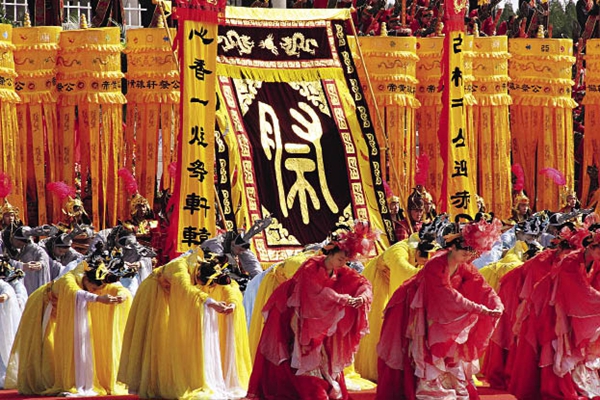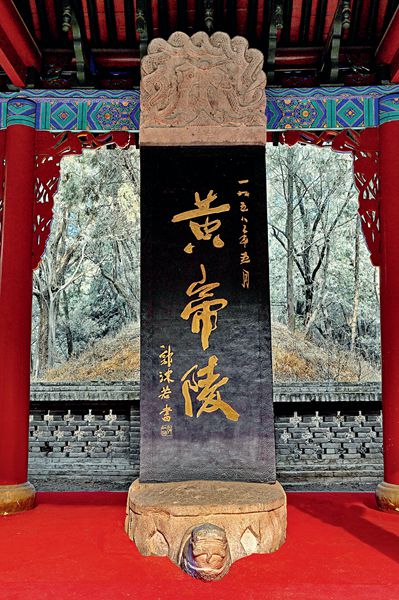OFFERING sacrifices has been integral to the Chinese rituals of praying to gods and ancestors since time immemorial. Ancients believed that the soul could exist without the body, and making sacrifices derives from this belief.
The intention behind this cultural ritual is to show respect for the departed as one would if they were still alive. Certain sacrificial ceremonies held to cherish the memory of the departed are held on special days. They are a medium of expression for continuing respect for forbears, and confirmation of the existence and continuation of a family, ethnic group, and the nation.

The Chinese people, as descendants of the Yellow Emperor, pay ritual tributes to this great ruler in acknowledgement of his inestimable contributions to the Chinese nation.
Since the legendary Yellow Emperor made inestimable contributions to the Chinese nation, his descendants pay tribute to him through majestic rites.
A tribal chieftain more than 5,000 years ago, the Yellow Emperor conquered various warlike tribes and became head of a tribal confederation. He is thus regarded as the first ancestor of the Chinese civilization.
Legend has it that the Yellow Emperor could speak soon after his birth, and that by the time he was 15 years old there was nothing he did not understand. At the age of 20 he inherited the chieftain title of the Youxiong tribe, which later gathered strength and steadily expanded its territories. At that time, tribal wars had wrought chaos on the Central Plains. The Youxiong chieftain led his tribe to conquer many weaker and smaller tribes, and so unified the Yellow River basin. Soon afterwards, he united with the Yan Emperor to defeat the mythological warrior Chiyou, and established the basic structure of the Chinese culture. Chinese people have since regarded themselves as descendants of the Yan and Huang Emperors.

The stele before the Tomb of the Yellow Emperor.
According to historical records, after the Yan Emperor passed away, the Yellow Emperor governed for some considerable time. It was then, as legend has it, that the Chinese people began to write characters, devised the calendar, invented musical instruments, and developed medical science, sericulture, and grain planting. The Yellow Emperor’s reign is regarded as having established the development direction of Chinese culture based on agriculture. His feats were lauded as constituting the vital spiritual bond uniting the Chinese nation.
After the Yellow Emperor’s death, people built temples and altars to him and performed complex and ornate sacrificial rituals that continued for thousands of years. His main concepts, such as combining civil and military forces, nurturing virtue by punishing evil, the rule of law, and governing through non-action, all helped to facilitate China’s grand unification after years of warfare. In addition to being regarded as a blood ancestor, the Yellow Emperor also personified the spirit of the Chinese nation, like a banner leading the people’s rise from the chaos of war to social unification, harmony and stability.
